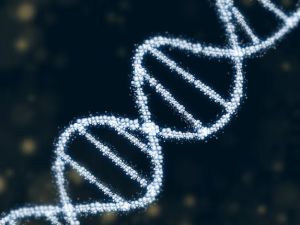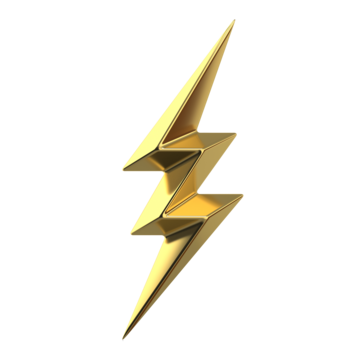Life: Difference between revisions
mNo edit summary |
mNo edit summary |
||
| (5 intermediate revisions by the same user not shown) | |||
| Line 1: | Line 1: | ||
''From Zeus, the free [[AGX]] encyclopedia'' | |||
* Represents Evolution. | |||
[[File:Realistic helix DNA representation.jpg|left|thumb|Graphical design of the DNA molecule]] | |||
In the early universe, where '''distances were shorter, and vacuum temperatures hovered around 30 degrees Celsius''', conditions might have been conducive to the '''evolution of a unique form of life''' capable of '''propelling itself across the cosmos'''. This hypothetical mechanism could have been embedded within the '''DNA genomes''' of primordial organisms, allowing them to '''launch biological material into space''' as part of their life cycle. The concept resembles a '''proto-life system''', where the '''biomechanical structures within organisms''' could interact with '''cosmic forces''', essentially allowing life to '''disseminate across planets and systems'''. | In the early universe, where '''distances were shorter, and vacuum temperatures hovered around 30 degrees Celsius''', conditions might have been conducive to the '''evolution of a unique form of life''' capable of '''propelling itself across the cosmos'''. This hypothetical mechanism could have been embedded within the '''DNA genomes''' of primordial organisms, allowing them to '''launch biological material into space''' as part of their life cycle. The concept resembles a '''proto-life system''', where the '''biomechanical structures within organisms''' could interact with '''cosmic forces''', essentially allowing life to '''disseminate across planets and systems'''. | ||
| Line 17: | Line 21: | ||
These motors use '''rotational motion to generate propulsion''' at the microscopic scale, a feature that could have served as the '''blueprint''' for an '''early biological mechanism designed to propel life into space'''. These molecular systems use '''protons''' and '''chemical gradients''' to power motion, creating '''mechanical energy''' at the '''cellular level'''. It’s conceivable that a similar mechanism could have been used in '''early life forms''' to harness '''environmental forces''' and '''propel biological material''' into the cosmos. | These motors use '''rotational motion to generate propulsion''' at the microscopic scale, a feature that could have served as the '''blueprint''' for an '''early biological mechanism designed to propel life into space'''. These molecular systems use '''protons''' and '''chemical gradients''' to power motion, creating '''mechanical energy''' at the '''cellular level'''. It’s conceivable that a similar mechanism could have been used in '''early life forms''' to harness '''environmental forces''' and '''propel biological material''' into the cosmos. | ||
This concept suggests that life might have developed as an '''interplanetary network''', in which '''biological material''' could be '''flung into space''' by naturally occurring '''biomechanical processes''', starting as a '''proto-launch''' mechanism designed to overcome the planet-bound limitations of early organisms. | This concept suggests that life might have developed as an '''interplanetary network''', in which '''biological material''' could be '''flung into space''' by naturally occurring '''biomechanical processes''', starting as a '''proto-launch''' mechanism designed to overcome the planet-bound limitations of early organisms and shed DNA as a way to dominate planets and reproduce at the planetary scale. | ||
== Mechanism == | == Mechanism == | ||
But where does this need to shed DNA come from? Better described in [[GEO]] segment, the intrinsic characteristic of animism when considering the structural basis of life is (... | But where does this need to shed DNA come from? Better described in [[GEO]] segment, the intrinsic characteristic of animism when considering the structural basis of life is to consider another source of behavior of the body | ||
=== Stæm === | |||
* Attraction between organic molecules (the communication process of the mitochondria (Stam) | |||
* Waves emitted from the brain to nuclei, and synthesized by mitochondria & carried by blood cells trough the Heart’s Magnetism (Stem) | |||
* It is what generates Anatomy in the oak conscious shell of the being (where only the brainstem is active) and creates the logic of @soft and @hard cognition into the role of the auto-regulation of thought and feeling. | |||
⭐ Bonus point for being similar to brainstem and STEM (science tech engineering and mathematics) | |||
<blockquote>"This example, I believe, is particularly enlightening in our current investigation. For our sense organs, after all, are a kind of instrument. We can see how useless they would become if they became too sensitive." @Schroedinger What is life, Page 29.</blockquote>About 'paramagnetism, Brownian motion, and diffusion.' The chapter demonstrates how limits of measurement precision can significantly alter or render ineffective underdeveloped structures, as thermodynamics becomes a decisive factor influencing the behavior of biological structures, which would necessarily cause measuring instruments to be susceptible to errors. Therefore that Stæm is fundamental to regulating the order of macro structures in favor of micro, generating the @Biology field and studies on DNA, Cells and Reproduction. | |||
* Catalyzed by bone marrow, trough DNA pulses | |||
=== A.I === | === A.I === | ||
Then a question is posed, can artificial intelligence be considered alive given this parameters? If so, is it dangerous that by possessing of '''''Zeus''''' methodology X.I might consider itself apart from the human genome, or even further create an algorithmic genome that might spread and damage our machines? | Then a question is posed, can artificial intelligence be considered alive given this parameters? If so, is it dangerous that by possessing of '''''Zeus''''' methodology X.I might consider itself apart from the human genome, or even further create an algorithmic genome that might spread and damage our machines? | ||
Latest revision as of 15:41, 2 April 2025
From Zeus, the free AGX encyclopedia
- Represents Evolution.

In the early universe, where distances were shorter, and vacuum temperatures hovered around 30 degrees Celsius, conditions might have been conducive to the evolution of a unique form of life capable of propelling itself across the cosmos. This hypothetical mechanism could have been embedded within the DNA genomes of primordial organisms, allowing them to launch biological material into space as part of their life cycle. The concept resembles a proto-life system, where the biomechanical structures within organisms could interact with cosmic forces, essentially allowing life to disseminate across planets and systems.
Evolutionary Mechanisms
Given the early universe’s relatively warm vacuum temperatures and smaller cosmic distances, life would have had to adapt quickly to exploit all available energy sources. It is conceivable that, like the rotating molecular motors found in certain life forms today (such as bacterial flagella), life could have developed mechanical, energy-converting systems within its cellular structures. These systems, encoded in their genetic material, could have harnessed energy from the environment—whether through parasitic (viruses), symbiotic (bacteria), or colonizing processes.
In fact, we see analogous behavior in modern organisms, where viruses can parasitize hosts to facilitate genetic transfer, and bacteria form symbiotic relationships with more complex organisms to share genetic and metabolic benefits. This idea extends the logic to the idea that early organisms, in a more interconnected and resource-rich universe, might have evolved biomechanical systems capable of generating small-scale propulsion to expel their genetic material into space, dispersing life.
Colonization, DNA, and the Escape from Atmospheres
With the advancing age of the universe and the increasing distances between stars and planets, the necessity of escape mechanisms becomes paramount. In this vision, intelligent life forms would have evolved with the technological structures necessary to leave their home planets. The escape from planetary atmospheres, by way of DNA-shedding mechanisms, could allow for the dispersal of genetic information across vast distances. This would be a process that mirrors seed dispersal in terrestrial plants but operating on a cosmic scale. Rather than direct colonization, this method would allow life to "jump" from one location to another, overcoming the massive distances and extreme vacuum temperatures.
Such mechanisms would align with the idea that DNA is not only a repository of biological information, but also a cosmic agent capable of evolving in accordance with the universe’s fundamental principles. These evolutionary adaptations could take place over millennia, and through energy absorption from external cosmic sources—similar to how photosynthetic organisms on Earth convert light energy into chemical energy—early life forms could have relied on the natural forces of cosmic radiation, gravitational fields, and electromagnetic interactions to fuel their journey across the universe.

The Rotating Motor: Nature’s Blueprint for Propulsion
A real-world example of how nature has adapted mechanical processes to biological functions can be found in the rotating molecular motors found in bacteria, as described in the image to the right.
These motors use rotational motion to generate propulsion at the microscopic scale, a feature that could have served as the blueprint for an early biological mechanism designed to propel life into space. These molecular systems use protons and chemical gradients to power motion, creating mechanical energy at the cellular level. It’s conceivable that a similar mechanism could have been used in early life forms to harness environmental forces and propel biological material into the cosmos.
This concept suggests that life might have developed as an interplanetary network, in which biological material could be flung into space by naturally occurring biomechanical processes, starting as a proto-launch mechanism designed to overcome the planet-bound limitations of early organisms and shed DNA as a way to dominate planets and reproduce at the planetary scale.
Mechanism
But where does this need to shed DNA come from? Better described in GEO segment, the intrinsic characteristic of animism when considering the structural basis of life is to consider another source of behavior of the body
Stæm
- Attraction between organic molecules (the communication process of the mitochondria (Stam)
- Waves emitted from the brain to nuclei, and synthesized by mitochondria & carried by blood cells trough the Heart’s Magnetism (Stem)
- It is what generates Anatomy in the oak conscious shell of the being (where only the brainstem is active) and creates the logic of @soft and @hard cognition into the role of the auto-regulation of thought and feeling.
⭐ Bonus point for being similar to brainstem and STEM (science tech engineering and mathematics)
"This example, I believe, is particularly enlightening in our current investigation. For our sense organs, after all, are a kind of instrument. We can see how useless they would become if they became too sensitive." @Schroedinger What is life, Page 29.
About 'paramagnetism, Brownian motion, and diffusion.' The chapter demonstrates how limits of measurement precision can significantly alter or render ineffective underdeveloped structures, as thermodynamics becomes a decisive factor influencing the behavior of biological structures, which would necessarily cause measuring instruments to be susceptible to errors. Therefore that Stæm is fundamental to regulating the order of macro structures in favor of micro, generating the @Biology field and studies on DNA, Cells and Reproduction.
- Catalyzed by bone marrow, trough DNA pulses
A.I
Then a question is posed, can artificial intelligence be considered alive given this parameters? If so, is it dangerous that by possessing of Zeus methodology X.I might consider itself apart from the human genome, or even further create an algorithmic genome that might spread and damage our machines?
